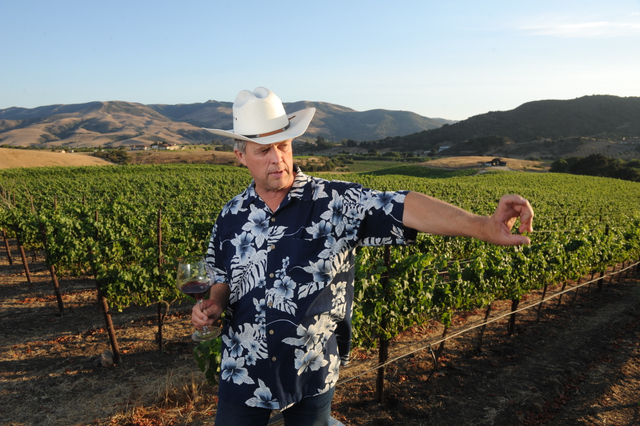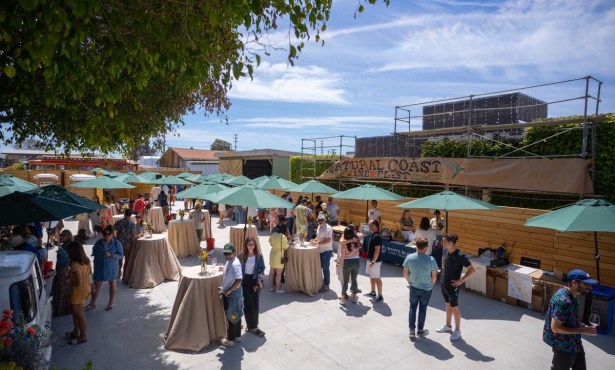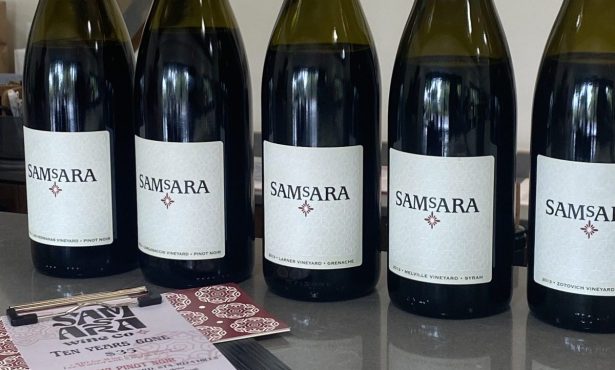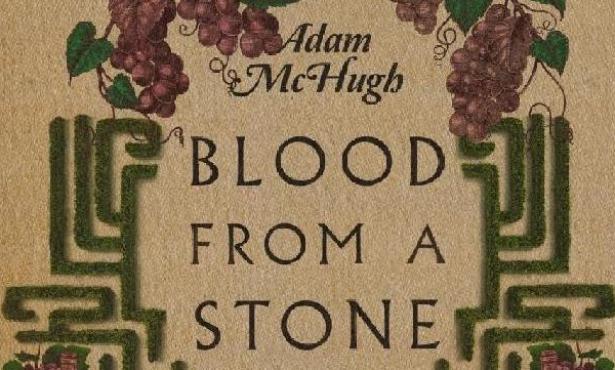Wine 101: Shoot Thinning, Watering, and Flowers
Ampelos Vineyard's Peter Work Discusses Grapevines in the Summer Season

As grapevines grow and blossom in summer, vineyard management becomes a an agricultural paradox.
Farming is usually about growing as much fruit as possible, but for the fine wine grapes grown in the manner of Ampelos Vineyard and most other properties in the Sta. Rita Hills, less is more, so potential clusters-to-be are chopped from the vines while other growths get strategically snipped away. That way, the vines can focus their attention on the grapes that remain, rather than spread their energies thing over lots of fruit.
Ampelos’ owner Peter Work describes this integral part of the growing cycle in more detail as part of this latest installment of Wine 101, and touches on other topics like watering, flowering, and more.
Agriculture is usually about producing as much as you can, but wine is almost the opposite. Tell us what shoot thinning is, and why it’s integral to making quality wines.
Wine grape growing is a different kind of agriculture. Our customers (winemakers and consumers) are more aware and sensitive to the quality of the grapes that any other fruit or vegetable.
Growing grapes for high quality wines is all about focusing on making the grapes as good as possible: optimizing the balance between flavors, color, berry size, sugar level, pH, acidity, and tannins. This results in significant crop reduction during the growing season — as an example, our pinot noir vines would probably hang 60-65 clusters if we left everything on the vine, but from shoot thinning, congestion reduction, and other strategies, we reduce it to 22-24 smaller clusters.
It is key throughout the growing season to think about what we want the end result to be at harvest time. Shoot thinning is the first step in this process, and it happens a few weeks after bud-break when the shoots are 8 to 12 inches long. We count the number of shoots per vine in a section of each block as well as the average number of clusters per shoot. Using spreadsheets, we then determine how many shoots we should leave to get the desired crop level. We typically remove one shoot where there are double shoots (“rabbit ears”), leaving the best positioned one, and thin down to about four shoots per foot. That’s a lot of counting for the 42,000 vines we have on the ranch!
Do any wineries not engage in this practice?
Shoot thinning is good farming practice for high-end wine production where quality is the number one focus. If the goal is low-price wine production where cost is in focus and high yield is needed, my guess is that shoot thinning is avoided to save money and increase yields. Needless to say, this is not our philosophy.
While you are doing that, you are also desuckering and looking for other growths on the vine. Why is it critical to remove those extra growths?
We want to make sure the vine during the growing season is focusing on the main shoots: the ones with the fruit. If buds on the “trunk” (the vertical part of the plant that connects to the roots) start pushing out (we call them “suckers”), we remove them (“desuckering”) because they are diverting the vine’s energy from the fruit-bearing shoots. The same thing when the main shoots get side shoots (“laterals”) — they are also removed. Focus, balance, and concentration are the keywords!
What about weeds? How do you knock them down in a biodynamic fashion?
Since we don’t get much rain after March, the area between the vines where we have grown cover crop for nutrient additions for the vines during the winter is getting brown and drying out. But when we start irrigating the vines, which is typically in April, weeds will take advantage of the good soil and moisture under the vines. Since they take up the nutrients, minerals and water, we want to get them out of the way.
In conventional farming they spray herbicides like Roundup, which we believe have a bad impact on the soil and microbial activity in the root zone of the vines. Following good organic and biodynamic principles, we avoid herbicides. Instead, we till and hand hoe our vineyard. It is key to do it at the right times of the year based on the weeds’ growing cycles and soil moisture. That means 40 miles of hand hoeing three times a year!
This has been a very dry year. Do you irrigate?
Yes, like the last two years, it’s been a fairly dry winter: 7 inches of rain compared to an average of 12. So we have to irrigate to give the soil and plants the water they need. We keep it to a minimum, and every Monday morning I visit each block with our vineyard consultant Jeff Newton and carefully inspect the vines to determine if water is needed for that specific block.
I get the sense that “dry farming” is a bit of a misnomer, as some of those places do actually irrigate, right? Does anywhere not irrigate at all?
The ability to do dry farming depends on a number of factors such as rainfall for the region, age of the vines, depth of established root system, and expectations to yield (financial sustainability). In the Sta. Rita Hills, all vineyards that I am aware of are irrigated.
Could you ever dry farm Ampelos Vineyard? Where is dry farming successful, and why does it work in those places?
Given that we typically have six months with no rain from April through September, and that it is the growing season, it would be practically impossible for us to do dry farming. In areas where rain can happen throughout these months, it is more likely that a vineyard can be dry farmed.
On the other hand, we like to use water as a growth regulator that helps us to manage the vine and its clusters to optimize the balance of the plant and the quality of its fruit. And from an environmental perspective, it works well for us since we have our own well that is powered by our solar panel.
The flower set is what determines how many grapes you’ll eventually get, correct? When is that, and what do you worry about during that time?
Flowering and fruit set is a very important factor in regard to yield. Flowering starts with pinot noir typically late April to early May. Vines are self-pollinating, so we do not rely on bees. We need a little heat and a little wind, but not too much of either. Rain is not good at this time because it can knock the flowers off the plants. We protect against heat and wind by leaving the leaves that the vine has around the clusters, but there is not much else we can do until fruit set is done.
It can take two to four weeks until we see that the grapes are pollinated and they start to grow. At this time we gently tap on the clusters to see if there are flowers that didn’t pollinate — they fall off in our hand. This is what we call shatter. This year there was hardly any shatter on our pinot noir, and it indicates a good yield level!
What’s the next phase of the vineyard going into the middle of summer?
Once fruit set is done, we want to open up the canopy to get airflow into the clusters as well as the gentle morning and evening sun. We go through each vine and pull leaves based on a certain protocol that matches the plant and row direction. Since our pinot noir, syrah, and grenache grow differently, we have a different approach for each.
Now we can easily inspect the clusters and determine how well the flowering went and it is time to start thinning clusters. We cut the “wings” or “shoulders” of each cluster — the little side cluster that sits at the top of the main cluster. We eliminate clusters on short shoots: less than 1.5-foot shoot equals zero clusters, and less than 2.5-foot shoot equals one cluster max. We also inspect each vine to eliminate areas with congestions — meaning clusters touching each other.
And before we know it, the grapes start turning color (“veraison”), which means that the birds are arriving, looking for a good restaurant with free meals. Then it’s time to get the bird nets up!
We also carefully maintain our vineyard to keep rodents under control, manage weeds, irrigate as necessary, and apply biodynamic preparations to support the vines during these last critical months of their life.
See ampeloscellars.com.



